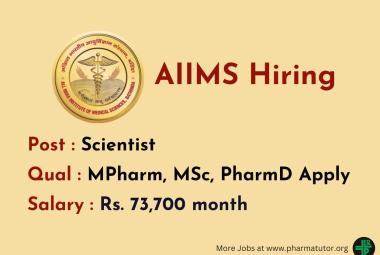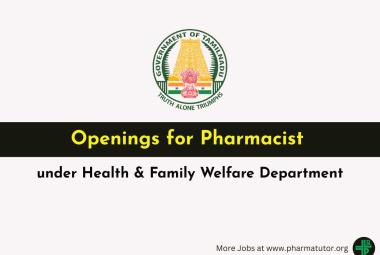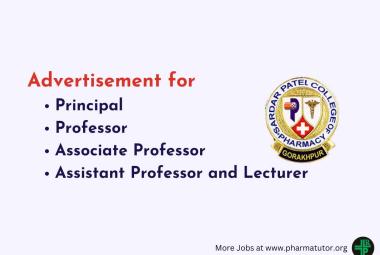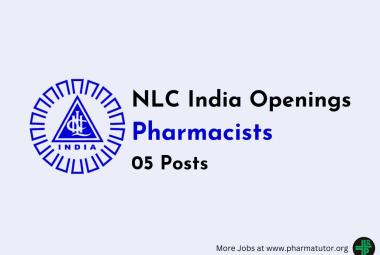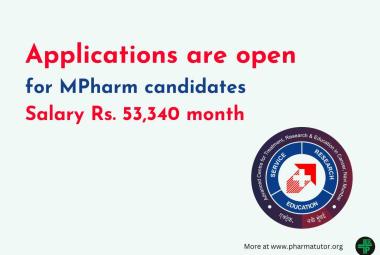About Authors:
Hemant Rathod*, Shakti Shekhawat, Jimit Shah, Parth Gandhi
Department of Pharmaceutics,
Kota College of Pharmacy, Kota, Rajasthan.
*hemant2787@gmail.com
Abstract
Oral solid dosage form are more popular than other dosage form but suffer from problems like taste, solubility, bioavailability; so patient compliance. To improve patient compliance, melt in mouth tablets have emerged as an alternative to conventional oral dosage form. The aim is to provide the tablet that quickly melts upon contact with saliva and also provides a good mouth feel. The venture's latest technology, called Frosta™, involves tablet formulations that can melt in a patient's mouth as quickly in 10 seconds much faster than existing commercial products made by tablet press machines. Melt in mouth tablet disintegrate in saliva without need of drinking water within 15 to 60 seconds. There is easy administration to pediatric, geriatric & psychiatric patients. They produce rapid onset of action with increased bioavailability. Free of the risk of suffocation due to physical obstruction when swallowed, thus offering improved safety. It has ability to provide advantages of liquid medication in the form of solid preparation. It can be manufactured with common methods such as Freeze drying, Moulding, Sublimation, Spray-Drying, Mass-Extrusion, Direct Compression and by using conventional equipment. Keeping in view of the advantages of the delivery system, rapidly disintegrating dosage forms have been successfully commercialized, and because of increased patient demand, these dosage forms are expected to become more popular.
REFERENCE ID: PHARMATUTOR-ART-1827
Introduction
They are solid dosage forms that dissolve or disintegrate within a minute in the oral cavity without the need of water or chewing and have a pleasant taste. They are popularly known as orally disintegrating tablets (ODT) and also called fast-dissolving, fast-melting or fast-disintegrating. The CDER, FDA defines an ODT to be solid dosage form containing medicinal substance(s), which disintegrates rapidly, usually within a matter of seconds, when placed upon the tongue. The European Pharmacopoeia recognizes the MMTs as orodispersible tablets or tablets intended to be placed in the mouth that subsequently disperses rapidly before being swallowed. Various terminologies with their acronyms are being used to describe an MMT by various drug delivery researchers and inventor companies. These are: melt in mouth (mouth melt) tablet (MMT); fast-melting tablet (FMT); fast-dissolving/ disintegrating tablet (FDT); orally disintegrating tablet (ODT); mouth dissolve tablet (MDT); rapidly disintegrating tablet (RDT); and orodispersible tablet(OT).
The venture's latest technology, called Frosta™, involves tablet formulations that can melt in a patient's mouth as quickly as 10 seconds – much faster than existing commercial products made by tablet press machines. The fast-melting nature of the tablets resembles the melting of frost, hence the name Frosta™. [1]
To fulfil all these needs the concept of melt in mouth or orodispersible tablet is developed, tablet that disintegrate in saliva, without need of drinking water within 15 to 60 seconds which offers fast absorption & then onset of action.[2]
Ideal characteristics of melt in mouth tablets:[2]
- They should not require water for administration yet dissolve or disintegrate in the mouth within a few seconds.
- They should have pleasing mouth feel.
- They should allow high drug loading.
- They should leave minimal or no residue.
- They should be compatible with taste masking.
- They should be portable without fragility concerns.
- They should exhibit low sensitivity to environmental conditions such as humidity & temperature.
- Conventional processing packaging equipment at low cost.
Advantages of Melt in Mouth Tablets:[3]
- Ease of administration to pediatric & geriatric patients & psychiatric patients.
- Bioavailability of drug is increased.
- No need of water, convenient for traveler.
- Good mouth feels changes particularly for pediatric.
- Produce rapid onset of action.
- Convenience of administration & accurate dosing as compared to liquids.
- Ability to provide advantages of liquid medication in the form of solid preparation.
- Free of the risk of suffocation due to physical obstruction when swallowed, thus offering improved safety.
- New business opportunities: line extension, exclusivity of product promotion, and patent life extention.
Significance of the Fast Dissolving / Disintegrating Drug Delivery System: [4]
Clinical
- Improved drug absorption.
- Faster onset of action.
- Minimized first pass effect.
- Improved Bioavailability.
Medical
- No tablet or capsule to swallow or chew.
- Better taste, no water needed.
- Improved safety and efficacy.
- Improved compliance.
- Good mouth feels property.
- Advantages of liquid medication in solid preparation.
Technical
- More accurate dosing than liquid products.
- Improved stability because of unit-dose packaging.
- Manufactured with common process and conventional equipment
- Advantages of liquid medication in solid preparation.
Technique for preparing Fast Dissolving / Disintegrating Tablets:[3]
Following are the various methods developed for designing of melt in mouth tablets.
Table 1: Technique for preparing fast dissolving tablets
|
Methods |
Basic Approach |
|
Freeze-drying |
Lyophilisation imparts glossy amorphous structure |
|
Moulding |
Microparticles dispersed in matrix. |
|
Sublimation |
Porous structure |
|
Spray-Drying |
High porous, fine powder |
|
Mass-Extrusion |
Softening active blend |
|
Direct Compression |
Disintegrants, water soluble excipients & effervescent agent. |
1) Freeze Drying (Zydis Method): [5-8]
Freeze-drying or lyophillazation can be utilized to prepare mouth-dissolving tablets, which are very porous in nature and which quickly disintegrate or dissolve upon contact with saliva. This method involves incorporation of the drug in water-soluble matrix, which is then transferred to the preformed blister with peel able foil, as the Zydis units are not strong enough to withstand being pushed through the lidding foil of a conventional blister, Freeze drying is then done to remove water by sublimation. [13]
R.P. Scherer patented Zydis technology by employing freeze drying process for the preparation of mouth dissolving tablet on the basis of patent issued to Gregory et al [14,15] Seager discussed formation, process technology & Bioavailability of fast dissolving tablets prepared by Zydis technology. The major disadvantage associated with freeze-dried fast dissolving tablets is fragility, which creates difficulty in conventional packaging & posses stability problems during storage. However in order to improve stability problems, Blank et al., used a mixture of mannitol & natural gum as carrier material in formulation of freeze dried tablets and concluded that the tablets showed improved stability in blister pack even when they were stored in stressful conditions. [16]
2) Moulding:
Moulded tablets are prepared by using water-soluble ingredients so that the tablet dissolve or disintegrate rapidly and completely.[29] Powder is moistened with the help of hydro alcoholic solvent and then moulded into tablets under pressure less than the conventional dosage form. The solvents are removed by air-drying. The tablet possesses porous structure, which facilitates easy dissolution. Adding sucrose, acacia or PVP-30, 22, may increase the mechanical strength of the tablet.
3) Sublimation:[9-13]
The basic principle involved in preparing fast dissolving tablets by sublimation technique is addition of a volatile salt to the tableting components, mixing the components to obtain a substantially homogeneous mixture & volatizing a volatile salt. The removal of volatile salts creates pores in the tablet, which help in achieving rapid disintegration when the tablet comes in contact with saliva. Camphor, Naphthalene, Urea, ammonium bicarbonate, etc, can be used to prepare porous tablets of good mechanical strength. Koizumi et.al used mannitol as diluent and camphor as a volatile material to prepare porous compressed tablets. The tablets were subjected to vacuum at 80 0C for 30 min to eliminate the camphor and thus form the pores in the tablet. Makino et.al utilized water as a pore forming material in order to prepare porous tablets with excellent mechanical strength and dissolution character. The major steps involved in the sublimation technique are shown in following figure 1.

Figure 1: Steps involved in sublimation
4) Spray Drying:[14-19]
Spray Drying can be used to prepare rapidly dissolving tablet. This technique is based upon a particulate support matrix that is prepared by spray drying and aqueous composition containing support matrix and other components to form a highly porous & fine powder. This is then mixed with active ingredient & compressed into tablet. The fast dissolving tablet prepared from spray drying technique disintegrated within 20 seconds.
5) Disintegrant addition (Direct compression): [20-23, 2]
Disintegrant addition technique is one of the popular techniques for formulating mouth dissolving tablets because of its easy implementation and cost effectiveness. The basic principle involved in formulating mouth-dissolving tablets by disintegrant addition technique is addition of superdisintegrant in optimum concentration so as to achieve rapid disintegration along with good mouth feel. The incorporation of microcrystalline cellulose and low substituted hydroxy propyl cellulose in the ratio of 8:2 to 9:1 gives shortest disintegration time. Fast dissolving tablet having analgesic activity was formulated using a combination of different superdisintegrant. Fast dissolving tablet of efavirenz (anti HIV agent) were formulated by using combination of microcrystalline cellulose and sodium starch glycolate as superdisintegrant.
Disintegrants can help to facilitate drug dissolution and consequently can improve bioavailability. Despite a long and proven record of starch, as a disintegrant, it possess a disadvantages when used in direct compression formulation. The relatively high levels required and the lack of compressibility often weakens the tablet structure. Therefore the development of new disintegrants that are effective at lower concentrations and help in rapid disintegration is of great importance in formulations for direct compression. A number of disintegrants, known as superdisintegrant like cross-linked carboxymethyl cellulose (Ac-di-sol®), Sodium starch glycolate (Explotab®) and crospovidone (polyplasdone XL®) markedly improve the tablet disintegration by swelling and exerting sufficient pressure in the tablet to break it apart into small segments. These superdisintegrants have a high swelling index at lower concentrations. So they are used in the formulation of fast dissolving/disintegrating tablets.
Disintegrants, an important excipient of, the tablet formulation are always added to tablet to induce breakup of tablet when it comes in contact with aqueous fluid and this process of desegregation of constituent particles before the drug dissolution occurs, is known as disintegration process and excipients which induce this process are known as disintegrants.
The objectives behind addition of disintegrants are to increase surface area of the tablet fragments and to overcome cohesive forces that keep particles together in a tablet.
Mechanism of tablet disintegrants:[24]
The tablet breaks to primary particles by one or more of the mechanisms listed below:-
- By capillary action
- By swelling
- Because of heat of wetting
- Due to disintegrating particle/particle repulsive forces
- Due to deformation
- Due to release of gases
By Capillary Action[24]
Disintegration by capillary action is always the first step. When we put the tablet into suitable aqueous medium, the medium penetrates into the tablet and replaces the air adsorbed on the particles, which weakens the intermolecular bond and breaks the tablet into fine particles. Water uptake by tablet depends upon hydrophilicity of the drug /excipient and on tableting conditions. For these types of disintegrants maintenance of porous structure and low interfacial tension towards aqueous fluid is necessary which helps in disintegration by creating a hydrophilic network around the drug particles.
By Swelling[24]
Perhaps the most widely accepted general mechanism of action for tablet disintegration is swelling Tablets with high porosity show poor disintegration due to lack of adequate swelling force. On the other hand, sufficient swelling force is exerted in the tablet with low porosity. It is worthwhile to note that if the packing fraction is very high, fluid is unable to penetrate in the tablet and disintegration is again slows down.

Figure 2: Disintegration of Tablet by Wicking and Swelling
Because of heat of wetting (air expansion)
When disintegrants with exothermic properties gets wetted, localized stress is generated due to capillary air expansion, which helps in disintegration of tablet. This explanation, however, is limited to only a few types of disintegrants and can not describe the action of most modern disintegrating agents.
Due to disintegrating particle/particle repulsive forces
Another mechanism of disintegration attempts to explain the swelling of tablet made with ‘non-swellable’ disintegrants. Guyot-Hermann has proposed a particle repulsion theory based on the observation that nonswelling particle also cause disintegration of tablets. The electric repulsive forces between particles are the mechanism of disintegration and water is required for it. Researchers found that repulsion is secondary to wicking.
Due to deformation[24]
Hess had proved that during tablet compression, disintegranted particles get deformed and these deformed particles get into their normal structure when they come in contact with aqueous media or water. Occasionally, the swelling capacity of starch was improved when granules were extensively deformed during compression. This increase in size of the deformed particles produces a break up of the tablet. This may be a mechanism of starch and has only recently begun to be studied.

Figure 3: Disintegration by Deformation and Repulsion
Due to release of gases
Carbon dioxide released within tablets on wetting due to interaction between bicarbonate and carbonate with citric acid or tartaric acid. The tablet disintegrates due to generation of pressure within the tablet. This effervescent mixture is used when pharmacist needs to formulate very rapidly dissolving tablets or fast disintegrating tablet. As these disintegrants are highly sensitive to small changes in humidity level and temperature, strict control of environment is required during manufacturing of the tablets. The effervescent blend is either added immediately prior to compression or can be added in to two separate fraction of formulation.
Conclusion
The introduction of fast dissolving dosage forms has solved some of the problems encountered in administration of drugs to the pediatric and elderly patient, which constitutes a large proportion of the world's population. Hence, patient demand and the availability of various technologies have increased the market share of Fast dissolving tablets, which in turn prolongs the patent life of a drug. Keeping in view of the advantages of the delivery system, rapidly disintegrating dosage forms have been successfully commercialized, and because of increased patient demand, these dosage forms are expected to become more popular.
References
1.Subal C Basak, “Melt in mouth tablet: An innovative technology for convenience”, medicalnewstoday.com
2.B.S.Kuchekar, et al, “Design of fast dissolving tablets”; Indian J.Pharm.Educ. 2001, 35(4), 150.
3.Chatap v. k, et al, Mouth dissolving tablets: Geriatrics & Paediatrics friendly drug delivery system, Indian drugs 2007, 44(6), 471.
4.Willium r pfister, Tapash K Ghosh, “Orally Disintegrating Tablets Products, Technologies and Development Issues, Pharmaceutical Technology 2005, pp 142.
5.Grother, L.P., et.al, “Taste masked fast dissolved freeze dried tablets” Cardinal Health, Pharmaceutical Technology and services.
6.Gregory G.K.E., Ho D., Pharmaceutical Dosage form package, US Patent, 4,305,502, (1981).
7.Gregory G.K.E., Peach J.M., Dumanya J.D., Articles for carrying chemicals, US Patent 4,371,516, (1983).
8.Blank R.G., Mody D.S., Kenny R.J., Aveson M.C., Fast dissolving dosage form US Patent 4, 946,684, (1990).
9.Sunada, H., J. Pharm. Sci. 1999, 88(10), PP 1004-1010.
10.Heinemann H., Rothe W., “Preparation of porous tablets”, US Patent 3,885,026 (1975).
11.Knistch, A., Hagen, E., Munz, H.D, “Production of porous tablets”, US Patent 4,134,843 (1979).
12.Koizumi K., WatanabeY., Morita K., Utoguchi N., Matsumoto M.; “New method of preparing high porosity rapid saliva soluble compressed tablet using mannitol with camphor, a subliming material”, Int. J. Pharm. 1997, 152, 127-131 .
13.Roser B.J., Blair J, “Rapidly soluble oral solid dosage form and method of making same and compositions thereof”, US Patent 5,762,961 (1998).
14.Allen L.V., Wang B, “ Process for making a particulate support matrix for making rapidly dissolving tablet”, US Patent 5,587,180 (1996).
15.Allen L.V., Wang B, ‘Particulate support matrix for making rapidly dissolving tablet”, US Patent 5,595,761 (1997).
16.Allen L.V., Wang B., Davies J.D, “Method of making a rapidly dissolving tablet’, US Patent 5,635,210 (1997).
17.Allen L.V., Wang B., Davies J.D., ‘Rapidly dissolving dosage form”, US Patent 5,776,491 (1998).
18.Allen L.V., Wang B., Davies J.D., ‘Rapidly dissolving tablet’, US Patent 5,807,576 (1998).
19.Allen L.V., Wang B., Davies J.D., “Method for producing a rapidly dissolving dosage form”, US Patent 6,066,337 (2000).
20.Bi Y., Sunada H., Yonezawa Y., Danjo K., Lida K., “Preparation and evaluation of a compressed tablet rapidly disintegrating in the oral cavity”, Chem. Pharm. Bull. 1996, 44, pp 2121-2127.
21.Ishikawa T., Kuizumi N., Mukai B., Utoguchi N., Fujii M., Matsumoto M., Endo H., Shirrotake S.,Watanabe Y., “Preparation of rapidly disintegrating tablet using new types of microcrystalline cellulose (PH –M series) and L-HPC by direct compression method”, Chem. Pharm. Bull. 2001, 49, pp 134-139.
22.Watanabe Y., Ishikawa Y., Utoguchi N., Matsumoto M., “ Preparation and evaluation of tablets rapidly disintegrating in saliva containing bitter taste masked granules by the compression method”, Chem. Pharm. Bull. 1999, 47, pp 1451-1457.
23.Grassono A., Marchiorri M., Ditoro M., castesin F., “Fast dissolving compositions having analgesic activity,” US Patent 6,197, 336 (2001).
24.Larry L. Augsburger; Mark J. Zellhofer, “Tablet Formulation,” Encyclopedia of Pharmaceutical Technology (Jan, 2002)
NOW YOU CAN ALSO PUBLISH YOUR ARTICLE ONLINE.
SUBMIT YOUR ARTICLE/PROJECT AT articles@pharmatutor.org
Subscribe to Pharmatutor Alerts by Email
FIND OUT MORE ARTICLES AT OUR DATABASE



